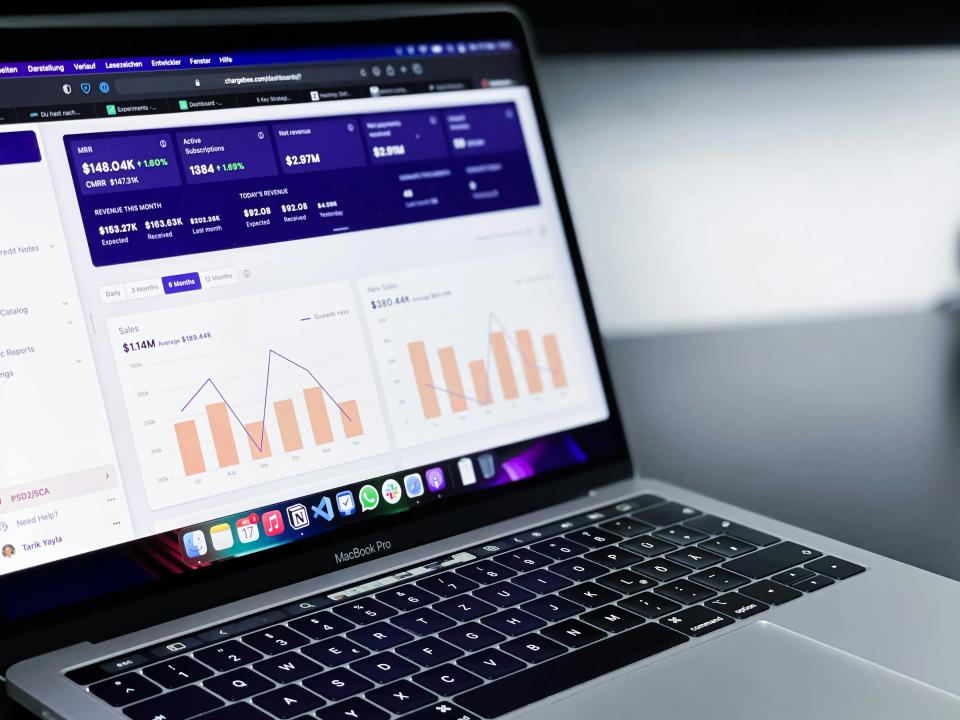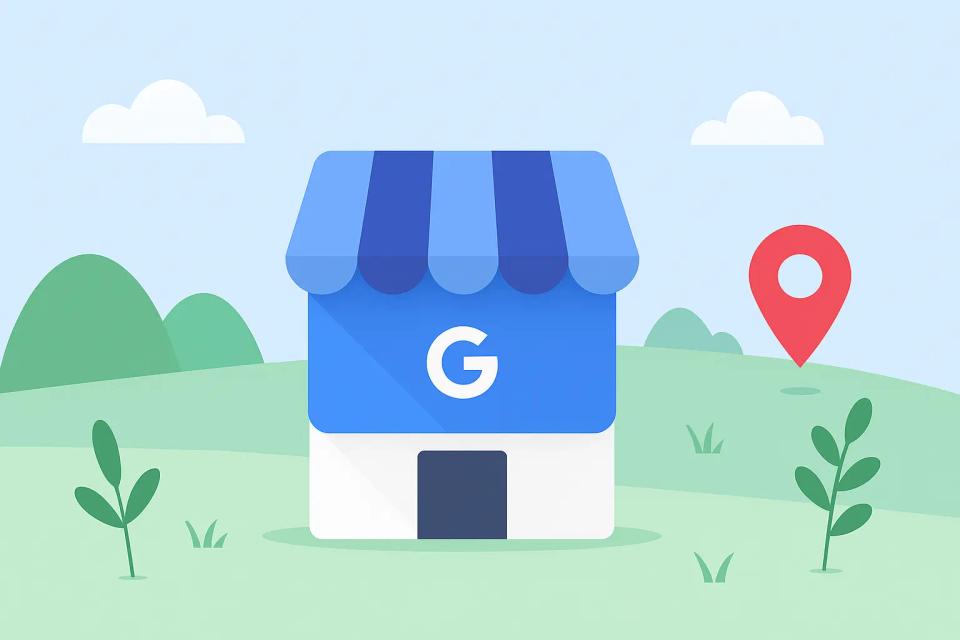Are you drowning in the details? Managing local SEO for one storefront is a full-time job. Trying to scale that effort across ten, fifty, or a hundred locations without a rock-solid plan feels like a nightmare you can't wake up from.
You're battling inconsistent branding, diluted search results, and the gnawing fear of missed opportunities in every single market. The common challenges are relentless: Name, Address, and Phone (NAP) data that never seems to match, generic corporate content that falls flat with local audiences, and the sheer, overwhelming complexity of managing dozens of Google Business Profiles. It’s enough to make even the most seasoned marketing manager want to throw in the towel.
But what if you could turn that chaos into control? This guide moves beyond the basics you’ve read a dozen times. We are diving deep into the sophisticated, advanced local SEO strategies for multi-location businesses that we at CaptivateClick use to forge regional dominance for our clients. We will show you how to build a scalable architecture, create hyper-local content that connects, and use advanced analytics to prove your success.
The Foundation: A Scalable Google Business Profile (GBP) Management System
Think of your Google Business Profiles as your digital front doors. For a potential customer, they are often the very first interaction with your brand. Managing them effectively and at scale isn't just a good idea—it's absolutely non-negotiable for survival and growth in today's market.
Centralized Control with a GBP Location Group (Manager Account)
Stop managing profiles one by one. A Google Business Profile Location Group (often called a Manager Account) is your command center, giving you the power to oversee every single location from a single dashboard. This is the first step to reclaiming your sanity and ensuring brand consistency. According to Meticulosity, one of the biggest challenges for multi-location businesses is maintaining this balance between centralized brand control and local autonomy.
The strategic decision here is crucial. You maintain central control over core information like your business name, primary category, and website links to prevent costly errors. At the same time, you can grant access to local managers, empowering them to handle time-sensitive updates like posting local photos, responding to customer reviews with a personal touch, and updating holiday hours.
This hybrid approach gives you the best of both worlds: ironclad brand consistency from the top down and authentic local engagement from the ground up. It transforms a logistical headache into a streamlined, powerful system for growth. Before scaling, it's vital to ensure you've mastered the core principles covered in our guide to local SEO for multi-location business strategies.
Advanced Profile Optimization for Each Location
Your basic profile information is just the entry fee. To truly dominate, you must go deeper and optimize every field to its maximum potential for each individual location. This isn't about just being present; it's about being the most relevant, helpful answer for every local search.
Don't just list your primary business category. Dig into Google's extensive list and add multiple, highly specific secondary categories that apply to each branch. If your Austin location specializes in commercial services while your Dallas branch focuses on residential, their categories should reflect that difference. This simple step helps you appear in more niche, high-intent searches.
Furthermore, customize the Services or Products tab for every single branch. Detail the unique offerings available at that specific location, using keywords that local customers are actually searching for. Leverage location-specific attributes like "Wheelchair accessible," "Outdoor seating," or "Curbside pickup" to stand out in filtered searches and give customers the exact information they need to choose you over a competitor. A final pro-move is to proactively seed the Q&A section with common questions and brand-approved answers, controlling the narrative and providing immediate value.
Architecting for Success: The "Locator + Location Pages" Model
A generic "Contact Us" page with a list of addresses is a relic of the past. It tells Google and your customers that your locations are just interchangeable dots on a map. To win in local search, each of your branches needs its own dedicated, fully optimized page on your website, a digital embassy that establishes its authority in the local market. This is a cornerstone of any effective set of regional SEO tactics.
The Anatomy of a High-Performing Location Page
Every location page must be a unique, content-rich destination. Start with unique on-page SEO elements, including title tags and meta descriptions that feature the city or region, such as `"Expert IT Services in Miami, FL | CaptivateClick"`. This immediately signals relevance to both users and search engines.
Next, you need ironclad NAP consistency. The Name, Address, and Phone number on this page must be 100% identical to the corresponding Google Business Profile listing, down to the last comma and suite number. As Moz notes, inconsistencies in NAP data are a major red flag for search engines and can severely damage your local rankings.
But the real magic lies in hyper-local content. Go beyond the address and phone number. Include photos of the actual storefront and team, bios of local staff members, testimonials from customers in that community, and details about local projects or sponsorships. This proves you are an authentic part of the neighborhood, not just a faceless corporation. Finally, embed a Google Map of the specific location and implement Local Business schema markup to give Google all the structured data it needs.
Implementing Local Business Schema at Scale
What is Schema markup? Think of it as a secret language you speak directly to search engines. It’s a piece of code that explicitly tells Google, "This content is the address for our Boston location," or "These are the operating hours for our Chicago branch," removing any guesswork.
For a business with hundreds of locations, manually adding this code to every page is impossible. This is where you implement it at scale. Using the JSON-LD format, your developers can create a template that dynamically pulls unique information (like address, phone number, and hours) from a central database for each location.
This ensures every single one of your hundreds of location pages has perfect, unique schema markup without the risk of manual error. It’s an advanced technical step that pays massive dividends in how clearly search engines understand and rank your local properties. For a more technical breakdown, explore our guide on advanced local SEO techniques that go beyond traditional optimization.
Content & Link Building: Winning the Hyper-Local Game
Generic corporate blog posts about industry news will not move the needle in local search. To build true authority and trust within a specific region, your content and backlink strategy must be intentionally and aggressively local. These are the local search ranking tips that separate the amateurs from the regional powerhouses.
Developing a Scalable, Localized Content Strategy
You need to create content that speaks directly to the needs and interests of customers in each market. This means creating "local lens" content. Instead of a generic article, write a piece like "5 Best Landscaping Trends for Southern California Homeowners" and internally link from that article to your location pages in San Diego and Los Angeles.
Showcase your expertise on a local level by publishing case studies and project portfolios organized by region. This provides powerful social proof that you understand the unique challenges and deliver results for customers in their community. A recent study by SearchAtlas found that hyper-local content significantly boosts community engagement and local search rankings.
Finally, leverage local events and partnerships. Did your Houston branch sponsor a local charity 5K? Write a blog post about it, share photos, and celebrate the community connection. This type of content is not only great for branding but is also a natural magnet for earning high-authority backlinks from local news outlets and organizations. To truly master this, you must learn how to leverage hyperlocal SEO to drive targeted leads.
Building Local Link Authority
Forget about spamming generic business directories. The game today is about quality, not quantity. To establish dominance, each of your locations needs to earn backlinks from other authoritative and relevant entities within its own local ecosystem.
This means actively seeking out link-building opportunities with other local businesses, respected community organizations, neighborhood blogs, and local chambers of commerce. A link from the "Our Partners" page of a well-known local charity is infinitely more valuable for your local SEO than a hundred links from low-quality, generic directories.
This targeted outreach, done on behalf of each location, sends powerful trust signals to Google. It proves that your branch is a recognized and respected part of that specific community, making it a more authoritative result for local search queries.
Reputation Management: Scaling Reviews & Trust
Your online reputation is your most valuable asset, and reviews are its currency. In fact, reviews are widely considered one of the top three local ranking factors. For a multi-location business, you don't just need reviews; you need a scalable system to consistently generate, monitor, and respond to them across every single one of your branches.
A System for Generating Location-Specific Reviews
Hope is not a strategy. You must be proactive in asking your happy customers for feedback. Implement an automated system using email or SMS to send a review request shortly after a transaction or service is completed. Crucially, this request must link the customer directly to the review submission form for the specific location they visited.
According to BrightLocal, 87% of consumers read online reviews for local businesses. Removing friction is key to capturing this feedback. A single click should take them exactly where they need to go.
Don't rely solely on technology. Train your local staff to make the ask at the point of service. A simple, friendly request from a helpful employee can be incredibly effective at capturing positive sentiment in the moment.
Responding to Reviews with a Local Touch
A systematic response strategy is just as important as a generation strategy. While you can use templates to ensure efficiency and brand voice consistency, personalization is what makes your response stand out. Always strive to respond to both positive and negative reviews promptly.
Here is a simple but powerful best practice: mention the specific location in your response. Instead of a generic "Thanks for the feedback," write, `"We're so glad you enjoyed your visit to our Austin branch! The team there works hard to deliver great service."`
This simple act accomplishes two things. It shows the customer you are listening and reinforces the local connection for both the customer and the search engine algorithms that are crawling these pages for local signals. This is a core component of the advanced local SEO strategies for multi-location brands that we champion.
Measurement & Analytics: Tracking What Matters
Are your efforts actually working? You can't improve what you don't measure, and flying blind across dozens of locations is a recipe for wasted budgets and missed opportunities. A sophisticated analytics and tracking setup is essential to prove ROI and make intelligent, data-driven decisions for each market.
Setting Up Your Analytics for Multi-Location Insights
Your standard Google Analytics setup isn't enough. You need to configure it to track performance for each of your individual location pages. Create specific views or use advanced segments in Google Analytics 4 to isolate traffic, user behavior, and conversions (like form fills or phone calls) for each location page.
To get truly granular data, use UTM parameters on all of your Google Business Profile links. By adding unique tracking codes to your main website link, appointment link, and menu link for each location, you can attribute website traffic and conversions directly back to your GBP efforts. This allows you to see exactly which profiles are driving the most value, a key insight highlighted in enterprise local SEO guides.
This level of tracking transforms your local SEO from a "cost center" into a provable revenue driver. You can confidently show stakeholders which locations are performing best and where to allocate more resources for maximum impact.
Advanced Rank Tracking by Geolocation
Checking your rankings from your corporate headquarters tells you nothing about what a customer sees in Phoenix, Arizona. National rank tracking is a vanity metric for local SEO. To get a true picture of your visibility, you must use an advanced SEO tool that can track your target keyword rankings by specific city, state, or even zip code.
This geo-specific rank tracking is the only way to understand your true performance in the markets that matter. It allows you to see if your Denver location is on page one for "plumbers in Denver" while your Miami location is languishing on page three for its key terms.
This data is your roadmap for action. It reveals which locations need more attention, helps you diagnose issues, and allows you to measure the direct impact of your localized content and link-building efforts over time.
From Scattered Dots to a Network of Powerhouses
Let's be clear. Dominating regional searches as a multi-location business isn't about working harder; it's about working smarter. It requires moving beyond the basics and implementing a cohesive, scalable, and authentically local strategy.
You must build your foundation on a centralized GBP system that empowers local managers. You need to architect your website with robust, individual location pages that serve as digital embassies for each branch. You have to fuel your growth with hyper-local content, build real community authority through targeted link-building, create a systematic process for generating and managing reviews, and track everything with precision.
By adopting these advanced tactics, you can stop the chaos. You can transform your regional presence from a collection of scattered, underperforming dots on a map into an interconnected network of dominant local powerhouses, each one winning its market.













